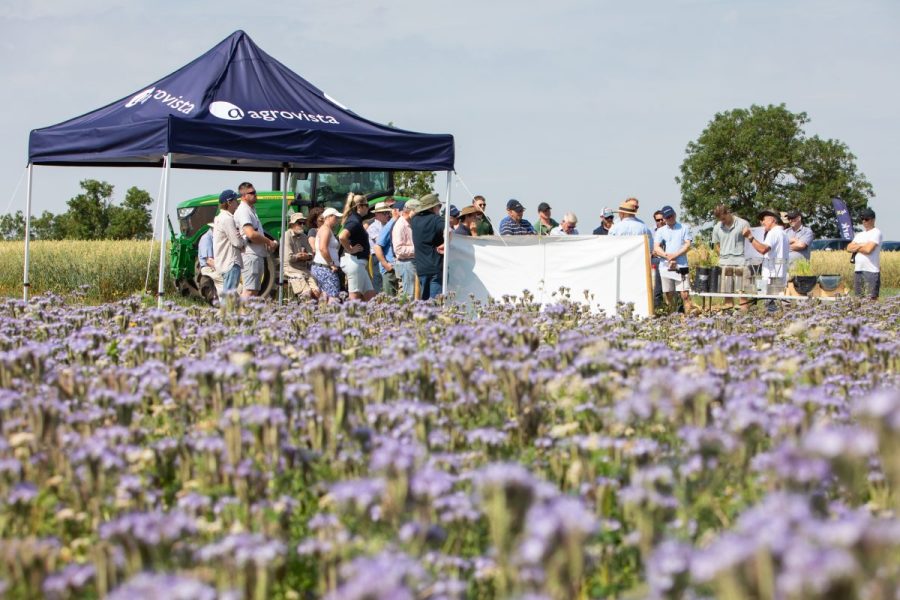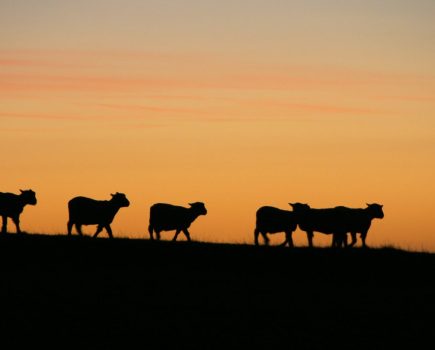Driving carbon into soils by optimising cover crops could prove a way to help combat blackgrass as part of a sustainable rotation. CPM heads to Agrovista’s flagship trial site to find out more.
“Plants trickle charge the ‘batteries’ which are essentially our soil.” DR DAVID PURDY
By Janine Adamson
While exactly what’s trialled at Agrovista’s Lamport AgX site in Northamptonshire shifts each season, at the heart of the experiment remains a common goal – tackling blackgrass. Equally, the trial has evolved to focus on the importance of soil health and achieving a more sustainable rotation.
Part of this year’s approach saw those two aspects come together, to hopefully demonstrate the intrinsic link between effective blackgrass control and soil health, including driving carbon.
Speaking at the recent AgX open day, cultivations expert, Philip Wright, explained it’s about understanding that growing a crop that yields well should drive more carbon into the soil, which in turn fosters another good crop that will become even more competitive against grassweeds.
“We then ask, how can we optimise that situation further by integrating cover crops wherever possible, to increase photosynthesis?,” he questioned.
Following years studying cultivations and their impact on soil biology and structure, researcher Dr David Purdy added that while cover crops and cash crops do a fantastic job, it’s critical that they’re managed optimally. “Plants are solar cells that capture sunlight energy and carbon dioxide, converting sunlight into chemical energy which turns into the constituent parts.
“Plants trickle charge the ‘batteries’, which are essentially our soil. Whereas heavy soils are large batteries, a silty clay loam soil as at Lamport, would be a smaller battery.”
He explained that although nothing can be done to change the size of the battery (soil type), it is possible to control how much energy is put in. “If you could raise your clay content by 1% – which clearly we can’t – that would increase the CEC (Carbon Exchange Capacity) by 0.5.
“However, increasing our soil organic matter by 1% increases CEC by two, in this case from 30 to 32. This is important because CEC has a significant impact on how nutrients get into plants.”
According to David, CEC reflects the quantity of stable, minerally-associated carbon compartments in the soil. “This is something we can affect as we can adjust the trickle charge, while also increasing the biological activity in our soil, increasing the carbon and the CEC.
“So it’s important to get energy into the system, and the way to make cover crops really work is both establishing and terminating them early,” he explained.
To explore this further, including the impact of soil health on weed control, a small-plot trial has commenced at Lamport involving a summer cover crop blend that was planted on 7 April, comprising phacelia, linseed, buckwheat, common vetch, crimson clover, oxeye daisy and wild carrot. Established using different techniques after various treatments, the work will progress to next year, when it’ll be cropped with autumn and spring-sown wheat.
To begin the trial’s assessments, Philip and the team have been evaluating the success of the cover crop’s establishment and the initial blackgrass flush. “We’ve looked at the different methods to establish the cover crop and hopefully correct any existing problems, namely the fact the land is affected by a calcite plate. All of the plots were sown using a direct drill and any other cultivations were carried out just beforehand.
“As a benchmark control, uncultivated bare stubble was left as fallow. While this has some blackgrass in it now, there’s not an awful lot because there wasn’t the seed stimulation.”
For one of the treatments, the cover crop was planted with a Weaving GD disc drill with no other soil movement. According to Philip, this took a while to establish because of the dry conditions. “We’re also very conscious of the levels of blackgrass coming through.
“This is because we want to manage the weed in the cover crop rather than the following commercial crop where blackgrass would be in direct competition. This plot didn’t have a lot of blackgrass at the start and while there is some now, the amount of heads isn’t substantial,” he explained.
For another treatment, the cover crop was established with shallow tillage using a Simba X-Press to produce a shallow seedbed. “This is to help the aggregation and the seed-to-soil contact, and primarily and perhaps most importantly, to stimulate and expose surface-shed blackgrass so more will emerge and grow than in the Weaving disc drilled-plot.”
Philip noted that here the canopy appears fuller with an improved blackgrass flush, while the cover crop establishment was also improved. “We didn’t get through the calcite plate entirely, but we started the process.”
A third treatment was established using the Simba X-Press followed by a Meir low-disturbance soil loosener with the aim of breaking up the calcite plate while stimulating blackgrass emergence and cover crop germination.
“This had the best cover crop emergence early on and equally probably has the greatest amount of blackgrass,” pointed out Philip.
Investigating the calcite plate in more detail, he explained that spade-worths of soil were removed from each plot to compare, with the plate remaining undisturbed in the bare fallow plot.
“In the direct-drilled plot, the cover crop’s roots pass down in the cracks between blocks of soil, so big plates are still present with few small aggregates and this will be why it took longer to establish. In the X-Press shallow seedbed plot – while the plate is still there and we didn’t get through it entirely – there are more roots which established better in good soil contact and are starting to open up the plate.
“It’s a lot better than the direct drilled plot, so a preliminary very shallow pass has helped the situation,” explained Philip.
In the plot with the Meir low-disturbance soil loosener, the structure formed into sensible columns, breaking up the zone, he added. “The nature of the stretching action has produced a profile that’s more accessible to cover crop roots – they’ve gone down and opened up a little better and stabilised it.
“Having the small aggregates produced by the shallow discing, and not losing them through the profile as the loosening was low disturbance, has produced the best result”
Philip commented that he and David Purdy had been investigating how to rectify this problem for a number of seasons and their work continues.
“Being able to loosen such layers at reduced depth does present some issues, as most ground undulates. A contouring series of loosening legs with individual depth control, as seen on a number of tine drills, is a possible way of achieving precise depth control.”
For the trial, the next step is for one half to be direct drilled with winter wheat after desiccating the cover crop before any seed has set. The second half will see the cultivations repeated, a cover crop established and then followed by spring wheat.
This article was taken from the latest issue of CPM. Read the article in full here.
For more articles like this, subscribe here.
Sign up for Crop Production Magazine’s FREE e-newsletter here.




